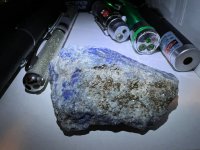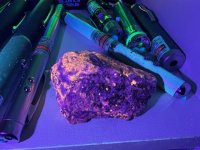- Joined
- Apr 23, 2011
- Messages
- 177
- Points
- 28
I've seen uranium glass is UV reactive and I'd guess a 405nm would make it glow.
But what else can a laser make glow?
Being this subforum only has one thread, thought it might be nice to have another with various materials a laser can "glow up"
But what else can a laser make glow?
Being this subforum only has one thread, thought it might be nice to have another with various materials a laser can "glow up"











